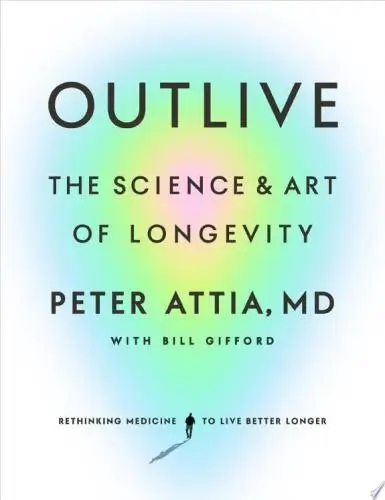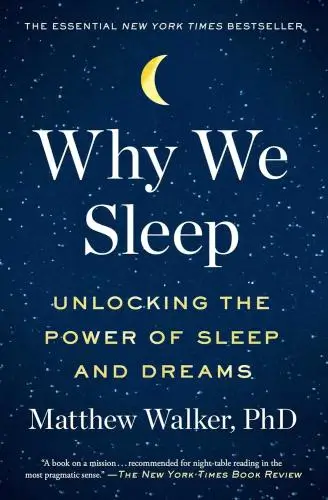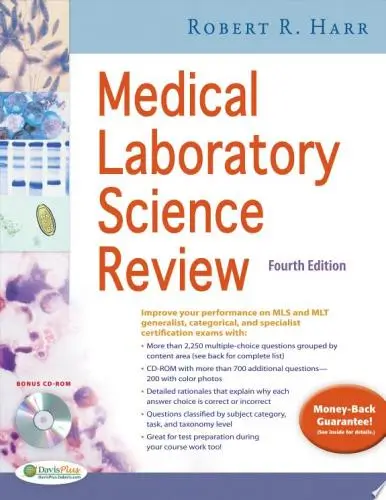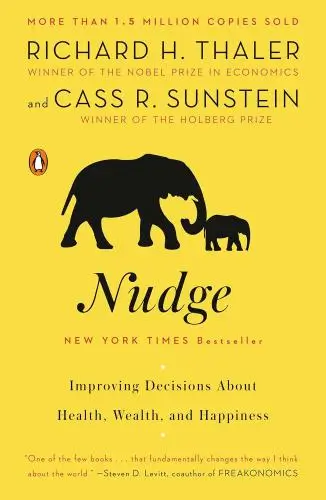Nudge
Improving Decisions About Health, Wealth, and Happiness
What's it about?
Nudge explores the concept of "choice architecture" and how subtle changes can influence decision-making. This book delves into the world of behavioral economics, showing how nudges can help people make better choices without restricting their freedom. With real-world examples and practical advice, Thaler explains how small tweaks in the way choices are presented can lead to significant improvements in decision outcomes.
About the Author
Richard H. Thaler is an influential economist known for his pioneering work in behavioral economics. His book "Nudge" explores how small changes can have a big impact on decision-making, while "Misbehaving" delves into the complexities of human behavior and economics. Thaler's writing style is engaging and accessible, offering unique perspectives on how people make choices and interact with the world around them.
10 Key Ideas of Nudge
Make Healthier Choices the Default Option for Better Long-term Well-being
By setting healthier options as the default choice in various settings, such as school cafeterias or workplace lunch menus, individuals are more likely to opt for these without having to actively make that choice.
This leverages the power of inertia and the human tendency to stick with pre-selected options, thereby promoting better health outcomes without restricting freedom of choice.
Learn DeeperRearrange Your Kitchen: Place fruits, vegetables, and other healthy snacks at eye level in your fridge or on your countertops. This makes them the first thing you see and more likely to be chosen.
Prep Healthy Meals in Advance: Spend some time each week preparing healthy meals that can easily be heated up. This makes the healthier choice the easier and default option during a busy week.
Use Smaller Plates: Automatically reduce portion sizes by using smaller plates for your meals. This can help control calorie intake without feeling like you're restricting yourself.
Opt for Water: Make water your default drink choice by carrying a reusable water bottle with you. This helps you stay hydrated and avoid sugary drinks without having to think about it too much.
Customize Your Menus: When eating out, don't be afraid to ask for healthier substitutions, like swapping fries for a salad. This makes it easier to stick to healthier choices even when you're not cooking.
- Example
A school cafeteria that replaces its front-and-center display of cookies and chips with fruits, yogurt, and whole-grain options, making these healthier choices more visible and accessible to students.
- Example
A company that modifies its vending machines to feature water, unsweetened teas, and healthy snack bars at eye level, while placing less healthy options in less accessible spots, encouraging employees to make healthier choices without removing options.
Simplify Financial Saving Decisions to Enhance Retirement Security
Implementing automatic enrollment in retirement savings plans simplifies the decision-making process for employees.
Instead of requiring them to opt-in, automatically enrolling them (with the option to opt-out) significantly increases participation rates.
This strategy uses the status quo bias to encourage a higher rate of saving for retirement, addressing the common procrastination and complexity associated with financial planning.
Learn DeeperReview Your Current Retirement Plan Enrollment: If you're not already enrolled in your employer's retirement savings plan, check if they offer automatic enrollment. If they do, and you're not part of it, consider opting in to start saving without having to make a conscious decision each time.
Increase Your Savings Rate Automatically: Many plans allow you to automatically increase your contribution rate over time. Set up an annual increase in your contribution, even if it's just 1%. This leverages the power of inertia in your favor, gradually increasing your savings rate without feeling a significant impact on your disposable income.
Opt for Default Investment Options if Unsure: If choosing between investment options feels overwhelming, start with the default option provided by your plan. These are often designed as balanced choices suitable for a wide range of investors. You can always adjust your investments later as you learn more.
Set Up an Emergency Fund: To avoid dipping into your retirement savings for unexpected expenses, start an emergency fund. Aim for an amount that covers 3-6 months of living expenses. This provides financial security and ensures that your retirement savings can continue growing uninterrupted.
- Example
Imagine you've just started a new job, and during orientation, you're informed that you'll be automatically enrolled in the company's 401(k) plan, with 3% of your salary being contributed unless you decide otherwise. You decide to stick with this arrangement, appreciating the simplicity of starting to save for retirement without needing to fill out additional paperwork.
- Example
Your friend tells you about how their employer offers a feature where their retirement plan contribution increases by 1% every year. They signed up for it three years ago and hardly noticed the difference in their paycheck, but were pleasantly surprised to see how much more they had saved for retirement compared to sticking with a static contribution rate.
Utilize Social Norms to Encourage Energy Conservation
Providing feedback to consumers about how their energy usage compares to their neighbors' can motivate them to reduce their consumption.
This approach taps into the desire not to deviate from what is considered normal behavior within a community, leveraging social norms as a powerful motivator for individual action towards energy conservation.
Learn DeeperCompare Your Energy Usage: Start by tracking your own energy consumption. Many utility companies provide detailed usage reports. Look for a comparison feature or ask if they can provide how your consumption stacks up against the average in your neighborhood.
Make Small Changes: Once you know where you stand, identify areas for improvement. This could be as simple as turning off lights when not in use, setting your thermostat a few degrees higher in the summer and lower in the winter, or using energy-efficient appliances.
Share Your Progress: Talk about the changes you've made and the impact on your energy consumption with friends and neighbors. This not only reinforces your commitment but might also encourage them to evaluate their own usage.
Join or Start a Community Initiative: Look for local energy conservation challenges or start one in your community. This could involve collective goals, like reducing the neighborhood's energy consumption by a certain percentage, and celebrating achievements together.
- Example
A neighborhood association creates a monthly newsletter that includes anonymous rankings of homes by energy efficiency based on data provided by the local utility company. This sparks a friendly competition among neighbors to climb up the ranks by adopting more energy-efficient practices.
- Example
An app that syncs with your home's smart meter to provide real-time feedback on your energy usage compared to the average in your area. It offers tips and challenges, like 'Can you use less energy than 75% of your neighbors this week?' to motivate reductions in consumption.
Employ Clear Labeling to Promote Informed Food Choices
Introducing clear, easy-to-understand nutritional labeling on food products helps consumers make healthier eating choices.
By providing essential information in an accessible format, it reduces the cognitive load and empowers individuals to make decisions that align with their health goals, thus nudging them towards better nutrition.
Learn DeeperRead Nutritional Labels Carefully: Whenever you're grocery shopping, take a moment to look at the nutritional labels on the products. Pay attention to serving sizes, calories, and the amounts of sugar, fat, and sodium. This will help you make more informed choices about what you're putting into your body.
Look for Key Nutritional Labels: Keep an eye out for food products that have clear, easy-to-understand labels like 'low sodium', 'no added sugars', or 'high in fiber'. These labels can quickly guide you towards healthier options without having to decipher complex nutritional information.
Use a Nutrition Tracking App: To make it easier to understand and keep track of what you're eating, consider using a nutrition tracking app. Many of these apps allow you to scan barcodes and instantly see a breakdown of the nutritional content, making it simpler to make healthy choices on the go.
Educate Yourself on Nutritional Basics: Spend some time learning about basic nutrition – what nutrients your body needs and in what amounts. This foundational knowledge will make it easier for you to interpret nutritional labels and understand which foods align with your health goals.
- Example
When choosing between two brands of yogurt, one might use the nutritional label to identify that one has significantly less added sugar than the other, making a more informed, healthier choice based on personal dietary goals.
- Example
A shopper uses a nutrition tracking app to scan the barcode of a packaged meal. The app reveals that the meal is high in sodium, prompting the shopper to choose a healthier alternative that aligns better with their low-sodium diet.
Facilitate Smarter Investment Choices Through Simplified Options
Offering a curated selection of investment funds, rather than an overwhelming array, can guide individuals towards making better investment decisions.
This strategy reduces the paralysis often caused by too many choices and leverages people's reliance on expert curation to nudge them towards more suitable and potentially less risky investment options.
Learn DeeperStart with a Goal: Before diving into investment options, clearly define your financial goals. Are you saving for retirement, a house, or perhaps your child's education? This will help narrow down the types of funds that align with your objectives.
Seek Simplified Investment Platforms: Look for investment platforms that offer a curated selection of funds. These platforms often use algorithms or expert analysis to select a range of funds that cater to different risk tolerances and investment goals, making the choice easier for you.
Educate Yourself on the Basics: While relying on curated selections, it's also beneficial to have a basic understanding of different types of investment funds (e.g., index funds, mutual funds, ETFs). This knowledge will make you more confident in your choices.
Use Robo-Advisors: Consider using robo-advisors, which are digital platforms that provide automated, algorithm-driven financial planning services with little to no human supervision. They often offer simplified investment options based on your risk tolerance and goals.
Review Regularly, But Don’t Overdo It: Set a schedule to review your investments periodically (e.g., annually) to ensure they still align with your goals. However, avoid the temptation to constantly check or change your investments, as this can lead to decision fatigue and potentially rash decisions.
- Example
An individual looking to start investing for retirement signs up with a popular robo-advisor platform. After answering a series of questions about their risk tolerance and retirement goals, they are presented with a small, curated selection of diversified portfolios. They choose one that aligns with their risk tolerance and goal timeline, simplifying their entry into investing.
- Example
A person interested in socially responsible investing (SRI) seeks out an investment platform that specializes in SRI and ESG (Environmental, Social, and Governance) funds. The platform offers a limited selection of highly vetted funds that meet strict sustainability criteria. This allows the investor to easily choose funds that align with their values without having to sift through hundreds of options.
Deeper knowledge. Personal growth. Unlocked.
Unlock this book's key ideas and 15M+ more. Learn with quick, impactful summaries.
Read Full SummarySign up and read for free!
Nudge Summary: Common Questions
Experience Personalized Book Summaries, Today!
Discover a new way to gain knowledge, and save time.
Sign up for our 7-day trial now.
No Credit Card Needed

Similar Books

TOP KNIFE: The Art & Craft of Trauma Surgery
Asher Hirshberg,
Diagnostic Hematology
Norman Beck
2 Weeks to Feeling Great
Gabriela Peacock
The Feeling Great! Wellness Program for Older Adults
Jules C Weiss
Autoimmunity and Autoimmune Disease
David Evered
Outlive
Peter Attia
Why We Sleep
Matthew Walker
Serpent Rising: The Kundalini Compendium
Neven Paar
Clinical Microbiology
Parslow
Medical Laboratory Science Review
Robert R HarrTrending Summaries

Peak
Anders Ericsson
Never Split the Difference
Chris Voss
Smart Brevity
Jim VandeHei
The Psychology of Money
Morgan Housel
The First 90 Days
Michael D. Watkins
Atomic Habits
James Clear
Thinking, Fast and Slow
Daniel Kahneman
The Body Keeps the Score
Bessel van der Kolk M.D.
The Power of Regret
Daniel H. Pink
The Compound Effect
Darren HardyNew Books

TOP KNIFE: The Art & Craft of Trauma Surgery
Asher Hirshberg,
English Spirituality
Gordon Mursell
The ^AOxford Handbook of Job Loss and Job Search
Ute-Christine Klehe PhD
Job Interviews For Dummies®
Joyce Lain Kennedy
Job Interviews In A Week
Alison Straw
Handbook of Career Development
Gideon Arulmani
The Art of Spending Money
Morgan Housel
$100M Offers
Alex Hormozi
A Candle for Kiri
Edna Mae Holm

